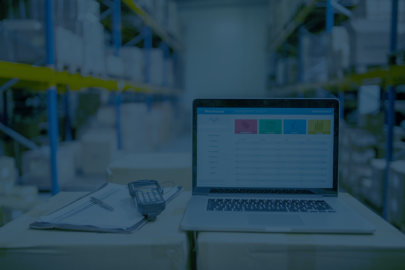Increase Productivity and Profitability Through Supply Chain Optimization
The global supply chain is a mechanism of incalculable complexity. Unfortunately, complexity equals cost. That’s part of the grand calculus of supply chain management: all things are interconnected. A tweak or disruption up chain affects the cost of all logistics down chain. Given our current economic climate, however, efficiency and cost savings are the name of the game. One key strategy for achieving efficiency and cost savings is through supply chain optimization.
Today, we will look at five key areas that can help you with logistics and cost optimization for your company. Those areas include:
- Inventory management
- Demand forecasting
- Transportation
- Supplier management best practices
- Your company’s level of technical integration
Let’s begin our streamlining efforts with the concept of inventory drag.
Reducing Inventory Drag
Successful inventory management is of the utmost importance when it comes to logistics optimization. After all, a significant portion of your company’s supply chain-related overhead comes from accrued stock. Effectively managing that inventory is the gateway to diminishing those associated costs by radically reducing the cost of burdensome overstocks or, conversely, the strain of out-of-stock items. In other words, when inventory isn’t properly controlled, it becomes a drag on both your balance sheet and your internal operations.
Part of a lean and agile supply chain that’s focused on logistical optimization involves leveraging tools and technology, such as supply chain optimization techniques, data analytics, warehouse management systems, etc., to help keep inventory levels low and work toward a just-in-time inventory approach. In fact, technology will underscore each area of optimization we have yet to discuss. For example, process automation can be used to make sure stock, inventory, or raw materials are sufficiently replenished without building up a backlog of in-house materials.
Regardless of whether you lean into the tech or implement warehousing best practices like pick and pack or cross-docking, inventory management is a cornerstone of logistics optimization that has a ripple effect throughout the rest of the supply chain.
Improved Demand Forecasting
Here’s a bit of folksy wisdom: you have to know where you come from to know where you’re going. The same sentiment applies to supply chain optimization. That’s why demand forecasting is another key lynchpin in the process.
Forecasting your future material needs accurately allows you to control inventory levels as well as the pace of the entire logistical process. Doing that, however, requires a broad and actionable dataset. To effectively proceed, you need to incorporate historical data analysis and market research alongside tech like a WMS and enterprise resource planner (ERP) to understand the ebb and tide of your industry properly for supply chain optimization purposes. Additionally, tools that use both AI and machine learning can help you uncover macro-level trends that are normally imperceptible to humans, which can help guide your internal processes more efficiently.
Many companies have already come to terms with the power of demand forecasting, especially where supply chain optimization is concerned. According to a 2022 McKinsey study, 20% of supply chain-adjacent businesses have already integrated solutions like AI, with another 60% hoping to get on board in the near future. The advantage? A reduction in unwanted stock and ultimately cost savings reflected on your own balance sheet.
More Efficient Transportation
Shipping and transport represent a significant drain on both a company’s time and resources. In fact, freight management activities equal approximately 58% of any given company’s total logistics spend. That’s why proper freight management is essential to supply chain optimization. But how do you go about streamlining your transportation policies?
The art of transportation management involves a mix of the following factors:
- Partnering with a wide array of vetted shipping partners
- Optimizing your transport routes
- Appropriately managing load/ container capacity
- Integrating technology
To that effect, you need to build redundancy into your shipping procedures to ensure that there are no costly delays due to unforeseen circumstances. Additionally, you have to analyze your company’s sales footprint and the needs of your business to determine what type of transport is appropriate, like less-than-load (LTL), full load (FTL), intermodal, or last-mile delivery.
In turn, technology such as AI and machine learning, in conjunction with a robust transport management system (TMS), can help you say goodbye to wasteful shipping practices, making for more agile supply chain management practices at your enterprise.
Improved Supplier Management
The global supply chain is a living, breathing animal with a legion of outputs to account for and control. So far, we’ve only talked about controlling for the outputs, i.e., activities like warehousing and distribution. In order to achieve optimized logistics, however, you need to streamline the other end of the supply chain as well. One key way is through improved supplier management.
If the last three years of supply chain disruptions have taught us anything, it’s that we need an active array of local vendors and suppliers to counterbalance the globalized nature of our logistical activity. In turn, optimizing your local supply lines introduces safety and resiliency to your operational footprint, fostering quicker, cleaner interactions between links even in the face of adversity for supply chain optimization.
Supplier management best practices include enlisting the help of the right vendors, for the right job, in the right geographic location, then actively managing their performance at periodic intervals.
Technological Integration
Throughout the bulk of this article, we’ve alluded to technological integration as the cornerstone of all supply chain optimization efforts, and for good reason. Good, solid practice may be central to your enterprise and its internal operations, but ultimately it is aided by a suite of technological advancements currently propelling the industry forward.
In order to deliver your product at scale, you need to integrate the right tools into your company’s tech stack. For companies occupying their own link in the supply chain, the following list, while not all-inclusive, features some of the most essential technological components, including:
- AI
- Machine learning
- Data analytics
- WMS
- ERP
- TMS
The triumvirate of AI, machine learning, and big data analytics can help you streamline every aspect of your operation, from procurement to last-mile delivery, through automation and deep cognizance of historical trends. The Warehouse management system and enterprise resource planner software work in tandem to keep internal processes aligned across your enterprise and running smoothly. In turn, TMS works to ensure that your distribution activities are firing on all cylinders.
Bringing your Operations Up to Speed
Adeptly navigating the twists and turns inherent to the modern-day supply chain is crucial for maintaining a competitive advantage in your industry. However, Supply chain optimization is not a one-size-fits-all solution but a multimodal approach. Companies that manage to integrate the best technology and best business practices are the ones who will position themselves to weather any storm, to conquer any level of adversity.
Unsure where to begin with your own logistics optimization efforts? Let Symbia Logistics show you the way.










